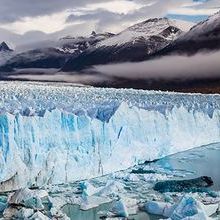Editorial
Issue: Life on a Changing Planet
11 May 2021 article

Welcome to the May 2021 issue of Microbiology Today! This is my first issue as Editor, and I feel that I have some very big shoes to fill following on from Rowena Jenkins and her four-year tenure in this role. Thank you, Rowena, for bringing together some excellent articles and for all your support during the handover of the editorship. I also want to say a very big thank you to Ellen Hinkley and Ruth Paget for helping me settle into this new role, and to the authors contributing to this issue in the backdrop of COVID-19 restrictions and all the disruption associated with it.
The title of this issue is ‘Life on a Changing Planet’. Although, as humans, we have all experienced significant and acute change across the planet as a consequence of the COVID-19 pandemic, this is not the sole focus of the May issue. We instead look at the chronic change that we have inflicted on Earth and the impact this has had on the microbial world. This issue starts with Sandra Pearson exploring the rise of Lyme disease in the UK. This vector-borne infection has increased in incidence to several thousand cases a year since it was first encountered in the 1980s. Sandra describes the possible role of climate and biodiversity changes, and our direct interaction with nature as reasons for this increase.
Next, we turn our attention to fungi. Whilst fungi are adapting to climate change, Marta Filipa Simões warns us in her article that these adaptations can be to the detriment of humans. Marta shows us how changes in climate have allowed new human pathogens to emerge and how a variety of phytopathogens are now able to spread to new environments and cause damage to crops, either directly or indirectly, as a consequence of mycotoxin contamination.
An increasing human population means an increasing requirement for food. One area which has seen significant growth to match this requirement is aquaculture. Unfortunately, as in agriculture, microbial pests represent a problem for aquaculture. A large proportion of ‘pests’ in aquaculture are protists, and to review the threat posed by these organisms we have an article written by members of Protistology-UK, which in 2018 became a partner organisation to the Microbiology Society.
The next two articles each explore an ecosystem impacted by climate change. Arwyn Edwards, Jarishma Gokul and Sara Rassner are up first with their article microbes in icy ecosystems. They describe an incredible diversity of microbial life trapped within and below ice waiting to be explored in detail. Unfortunately, it seems that some of this life is contributing to the demise of these ecosystems, as the authors go on to describe the action of algae and their photosynthetic pigments absorbing thermal radiation and hastening glacial melting.
Moving away from the poles of the planet, Christian Voolstra writes about the microbiology of coral resilience. The warming of Earth’s oceans has been disastrous to the ecosystem of the coral holobiont, with disruption of this ecosystem leading to the coral bleaching and death we have seen reported in the media. In spite of this, Christian describes the promise of introducing thermotolerant micro-organisms into coral ecosystems as a way of protecting the coral we have left.
Can micro-organisms save us from our climate catastrophe? This is the question posed by André Antunes in our last article. Various micro-organisms have the capacity to utilise existing greenhouse gasses or restrict their production. André explores how this capacity can be exploited with examples such as microbial CO2 capture for the creation of calcite or the use of probiotics to reduce methanogenesis in ruminants.
We finish this issue with a highly topical Comment piece. Rosa von Borries and Rachel Lowe warn us of the danger of wildfires and how the pollution they generate can synergise with the symptoms of COVID-19 to cause increased severity and mortality in at-risk groups. Given the increase in the length and severity of wildfire seasons in recent years, Rosa and Rachel discuss the need for further research to investigate the interplay between wildfire pollution and respiratory infections in order to identify strategies to protect vulnerable individuals.

Chris Randall
Editor
Image: Anton_Petrus/ iStock.


